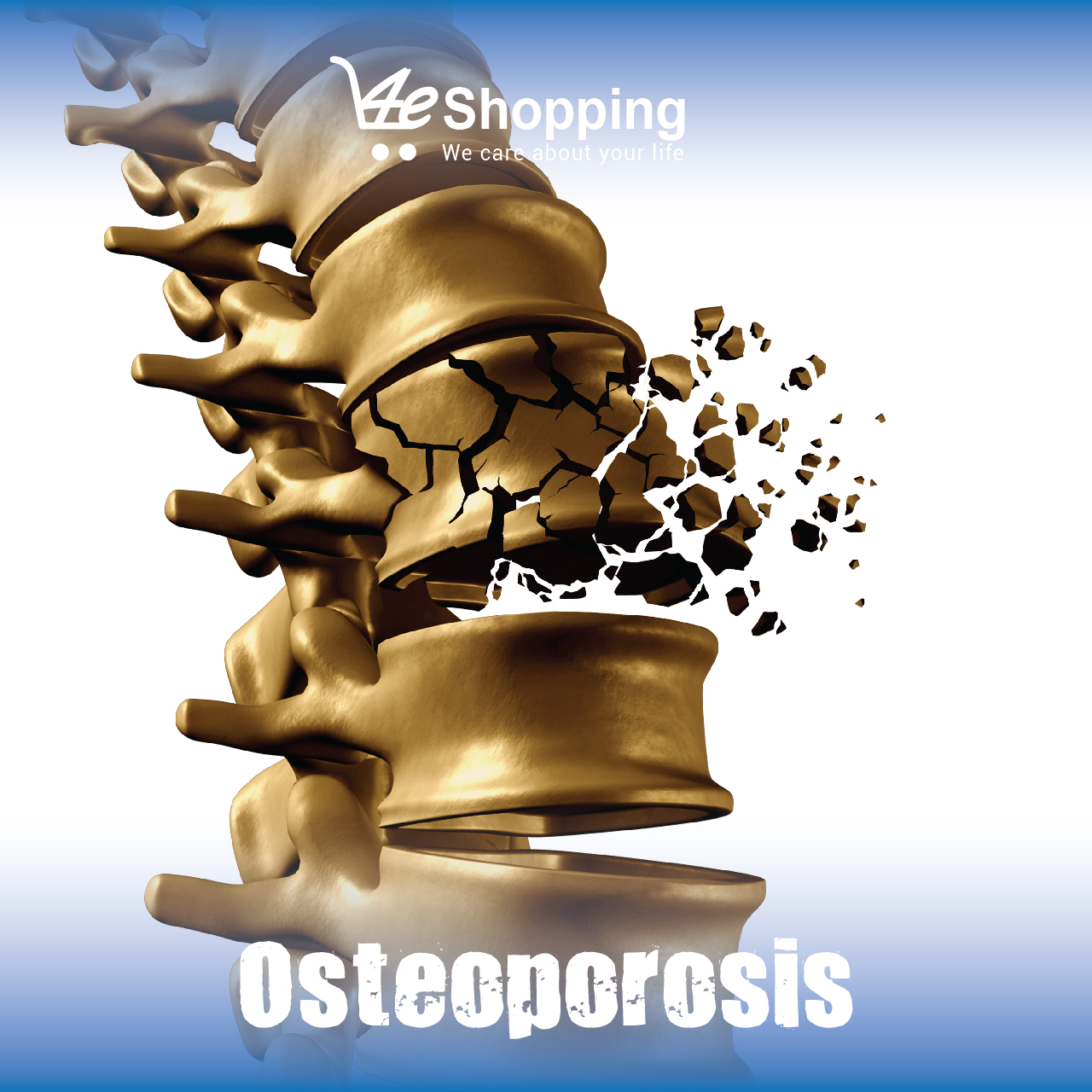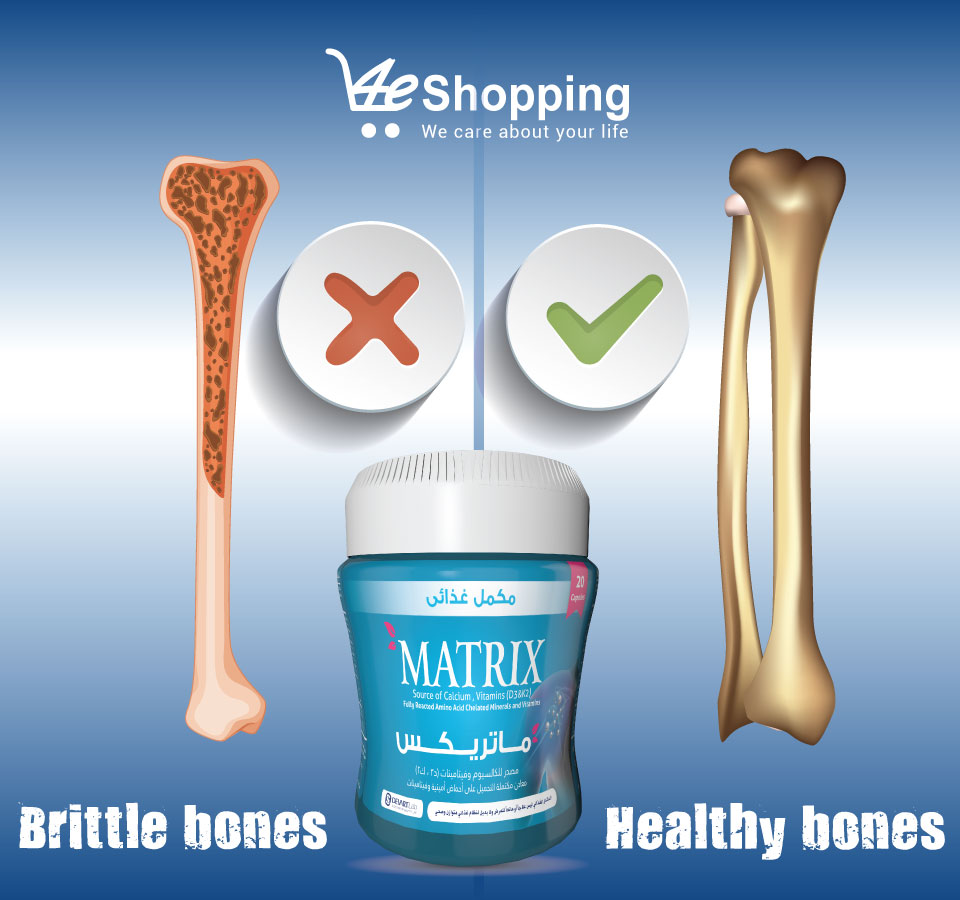
Pharmacist Pioneer Community. Why?
Jul 03 - 2022

Osteoporosis is a silent disease that affects more than 200 million people worldwide. It rarely has any clear symptoms that warn of its presence, it often surprise most people with fractures, sine it is the main cause of it, especially among women over the age of 50 years, as 1 in every 3 women suffer from it and have suffered from a fracture because of it, and also 1 in every 5 men got fractured as a result of its presence, as people with osteoporosis are at risk of different fractures doing normal daily activities, and among the most common of these fractures are fractures of the ribs, wrist, hip and spine.
Osteoporosis is a bone disease that leads to the ease and increase of the likelihood of fractures. It occurs when the balance between bone formation and resorption is disturbed, which leads to a lack of deposition of the essential minerals that make up bones (calcium and phosphorous), which affects their density and hardness by transforming the small and many internal spaces that are organized in a way that supports the rigidity of the bones into large eroded hollow spaces, causing the bones to thin and lose their strength and density. As a result, doing the simplest movements and daily activities may pose a strong threat of exposure to painful fractures or tearing while doing the simple movements such as bending over, lifting something, or even coughing!

The disease is chronic and constantly progressing, but in silence, it does not have any distinct symptoms that indicates its presence, especially in the early stages before the exposure to any fractures, because fractures are the first symptom that indicates its presence. However, with some careful observations, the possibility of its occurrence can be deduced, since it is a chronic progressive disease, the stages of its progression were divided as an attempt to detect it precisely into early and advanced stages, each with some simple signs that may indicate its presence, but it is not confirmed except by radiography and medical test.
People often do not notice until after a long period of time that it may reach the advanced stage, but there are signs that may indicate its early occurrence, such as:
Here the symptoms and signs appear very clearly and are as follows:
The bones in the body go through continuous processes of renewal through formation and resorption to replace old cells with new ones. In childhood, the formation processes are more than resorption because the bones are in the process of growth and need to increase their size and mass, after the early 20’s the formation processes slow down gradually to stabilize at the age of 30 after the completion of bone growth for adults, and with the elderly and the presence of chronic diseases or some health problems that disrupt the balance of many vital processes in the body, including the processes of regenerating bone cells and maintaining their quality, resorption processes take over the control, which makes the bones lose their density and hardness and lead to easy breakage, some of these health problems are:
It may also be a side effect of using some medications in high doses or for a long time, such as:
Women are most at risk of osteoporosis, either after reaching menopause due to the decrease in estrogen that helps build the bones by stimulating the process of building bone cells, or during the periods of pregnancy and lactation where the fetus or infant gets its need of calcium from the mother, which exposes her to calcium deficiency as a result of poor nutrition and not taking nutritional supplements.
For pure genetic reasons related to ethnicities, people with white or light skin are generally more likely to develop osteoporosis than dark-skinned people.
The vital processes are affected with time, after the body has been working with all its energy on building, after a certain age it begins to calm and the efficiency of vital processes decreases as it happens in the bones where the process of absorption and deposition of calcium in the bones decreases, which affects its hardness compared to other age stages.
Smoking increases free radicals in the body that cause damage to any cell that interacts with it, and these cells may be bone cells.
A parent with osteoporosis and fractures history may expose his children to the same problem, genetically.
Slender, thin-boned women and men are at greater risk to develop osteoporosis because they have less bone to lose compared to larger boned women and men.
Fractures of the spine, or hip, are one of the most serious complications of osteoporosis, which are often caused by a fall and can lead to disability and even an increased risk of death within the first year after the injury.
In some cases, vertebral fractures can occur without a fall, as the vertebrae can weaken to the point of collapsing and fraying, which may lead to back pain and bending.
Eat a balanced diet that includes plenty of dairy products, fish, fruits and vegetables to meet the body's need of calcium and vitamin D.
|
Age |
Less than 50 years |
More than 50 years |
|
Daily requirement |
1000 mg |
1200 mg |
|
Age |
Less than 50 years |
More than 50 years |
|
Daily requirement |
400-800 IU |
800-1000 IU |
Resistance training develops muscle strength, endurance and muscle mass, and maintains or even improves bone mineral density. Weight training stimulates increased bone density and improves balance, thus preventing falls and fractures.
To support the body with its needs of vitamins and minerals from an external source in case the nutrition does not provide the necessary quantities.
|
Calcium |
|
|
Vitamin D |
|
|
Vitamin K2 |
|
|
Magnesium |
|
|
Zinc |
|
|
Potassium |
|
|
Copper |
|
|
Boron |
|
|
Manganese |
|
|
Vitamin C |
|
|
B-carotene |
|
It is very important to follow up with the doctor periodically to do the necessary checks, especially during pregnancy, lactation, after menopause, and for the elderly in general because they are vulnerable to infection, the doctor may prescribe some medications that may prevent the disease from occurring or its development in its early stages.
*This article was written by an integrated medical team affiliated with Devart Lab, the leading company in the field of Nutraceuticals in Egypt and the Middle East (Nutrigenomics and Food Fortification), by providing nutrients that are fortified with minerals and vitamins that the body needs on a daily basis to obtain effective results in the least possible time. By using the latest pharmaceutical technologies that ensure full absorption without any side effects.